April 15, 2025 | 20:59 GMT +7
April 15, 2025 | 20:59 GMT +7
Hotline: 0913.378.918
April 15, 2025 | 20:59 GMT +7
Hotline: 0913.378.918
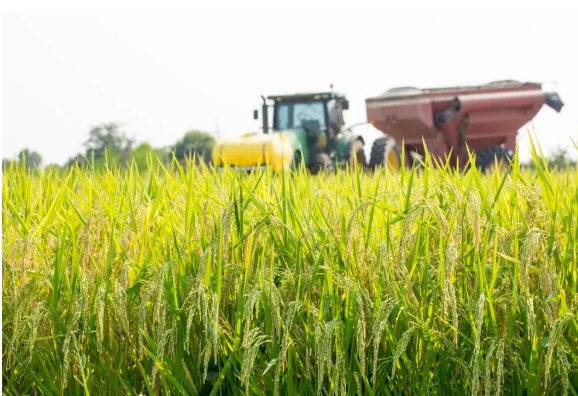
Rice ready for harvest in a Louisiana field.
Sustainable Brands – a female-founded Public Benefit Corporation, held its annual meeting in San Diego in October of 2024 (full program). For the second year the event included a “Regenerative Agriculture Summit.” “Regenerative” is an increasingly popular term that is now being applied more broadly than in agriculture. Indeed, the sign on the SB2024 check-in desk read: “The Global Event for Regenerative Brands and Leaders.”
Throughout this meeting there were presentations about regenerative agriculture initiatives involving many different crops and growing regions. US Soy and DTM described the use of regenerative practices in rotations of corn, soybeans, wheat and hay. Another presentation titled “The Walmart PepsiCo Model for Championing Regenerative Agriculture” involved rotations including oats, canola, corn and wheat. Rice is the focus of a partnership between Mars (e.g. Ben’s Original rice) and the Delta Harvest cooperative. The bourbon brand Maker’s Mark described their work with local growers on regenerative small grain production. Motts gave a presentation on their regenerative apple production project for New York. There were also presentations about regenerative dairy operations by Mondelez International and on regenerative forestry as part of a Walmart project.
The exchanges throughout the meeting in San Diego reflected an evolving consensus that while there is no “one size fits all” definition of “Regenerative Agriculture”, there are unifying principles for managing farms and pastures as living ecosystems, and agreement that their resilience depends on biodiversity and nutrient circularity. A central goal for most regenerative systems is to improve “soil health” - the vitality of the complex biological systems in the soil (fungi, bacteria, earthworms, beneficial insects and nematodes...).
Soil health improvement typically involves avoiding mechanical disturbance (e.g. plowing), and feeding the living community by keeping plants growing on a field for as much of the year as possible (e.g. by using diverse crop rotations, cover crops, relay crops or double cropping). Soils tended this way build up a granular, aggregate structure based on “stable organic matter” (SOM) so that the soil can “breathe,” capture more of the rainfall or irrigation it receives, store to more of that water, and retain/recirculate mineral nutrients that plants need to grow.
The details of Regenerative farming vary by crop and geography. For instance, the focus of the Mars/Delta Harvest rice project was on alternative irrigation practices that conserve water and reduce greenhouse gas emissions. The Mott’s apple project emphasized the encouragement of native pollinator species. The US Soy/DTM project focused on practices to optimize soil health and efficient ways to verify practices and impact. The PepsiCo regenerative program draws on site-appropriate use of reduced tillage, cover crops, rotational diversity and livestock integration. The Maker’s Mark small grains program has an emphasis on how soil health and nutrient cycling could impact regional water quality as well as carbon footprint.
While explicit promotion of “Regenerative Agriculture” is a relatively recent trend, it’s practical implementation typically involves a combination of already proven farming practices that have been pioneered, refined and validated over decades by innovators and early adopters in the farming community (e.g. no-till or strip-till, controlled wheel traffic, cover cropping, diverse rotations, precision seeding and fertilization, integrated pest management (IPM) that protects pollinators and beneficials, animal integration in crops, rotational grazing of pastureland…). Because of the individual and collective experience that farmers have with these methods, the farming community in each area is able to weigh the risk/benefit ramifications of making a multi-year commitment to a regenerative program that combines several practices.
Depending on the crop rotation and geography, proponents of a Regenerative system may be able to make these sorts of claims:
Climate Change Mitigation and Other Environmental Benefits:
Practices like no-till and cover crops that build-up of total soil organic matter over time can lead to net carbon sequestration. Scrupulous use of fertilizers requires less of a production carbon footprint and in many cases less runoff or leaching of nitrate and phosphorus. That has water quality benefits and, in some circumstances, can minimize the greenhouse gas footprint caused by indirect nitrous oxide emissions. The biodiversity improvements of regenerative systems are another documentable benefit – for instance PepsiCo has documented positive biodiversity outcomes on 1.6 million acres of the 1.8 million acres in its programs.
Resource Use-Efficiency:
The sustainable agriculture movement that has preceded and laid groundwork for “regenerative” practices has been working out a system of metrics to document resource use efficiency (land, water, labor, input-footprints…). An example would be the Cotton Trust Protocol. Regenerative systems score well by these metrics.
Nutrient Density:
With both regenerative cropping and regenerative grazing there can be measurable differences in the nutrient-density of the food in terms of trace minerals and/or healthy fats. When these can be consistently documented, a published survey indicates that it would be a highly attractive feature for consumers.
Socio-Economic Benefits
As the soil health of a regeneratively farmed field improves, it’s yield potential becomes more stable under climate stress conditions and ultimately higher over-all. This is certainly good for grower economics and for the local economy, but ultimately it is something that will be increasingly important for society as a whole.
One theme that came up repeatedly was the importance of creating a system that truly works for the farmer since they are the ones who must invest in equipment and supplies, take risks and make long term commitments. As the spokesperson for Mondelez dairy put it, “the farmer has to be at the center” and that the rules cannot be hyper-prescriptive because “every farm is different. “Mott’s described their apple project as being “farmer-first. The state and national organizations that represent farmers are also getting involved including the United Soybean Board, Practical Farmers of Iowa, The Soil and Water Outcomes Fund and Illinois Corn growers Association and many others. Margaret Henry at PepsiCo talked about the need to work with farmers to provide the three legged stool of support – economic, agronomic and social - as they transition to regenerative practices.
Another important theme has to do with trust. The individual farming practices that make up a regenerative program are already being employed by farmers to varying degrees, but it is a big step to move to a full suite of practices as an open-ended commitment. To make such a big decision farmers tend to look to “trusted advisors” within their own community such as a Certified Crop Advisor or other agronomist. The PepsiCo/Walmart program specifically enlists that sort of expertise and also employs local demonstration trials at 82 farms globally so that growers can see the results in their own setting. The next step tends to be made by the farmers who tend to be “early adopters” and can then provide additional evidence for their neighbors.
Regardless of the political controversy about climate change and its causes, farmers are already feeling the effects of more extreme weather events and are motivated to evaluate regenerative farming as a way to protect their farm income and their ability to pass along a viable business to the next generation. In addition to the trusted advice and local evidence described above, a move to a regenerative program usually involves some investment in things like equipment or cover crop seed. There are also some yield risks during the first few seasons before the full soil health benefits begin to kick in. In several of the successful regenerative programs the sponsors provide the farmers with transition funding. For instance, in it’s 2023 project work PepsiCo provided support for 5,500 farmers making these sorts of changes and were thus able to drive regenerative adoption on 1.8 million acres.
Because there have been problematic examples of “greenwashing”, particularly around carbon markets, there is heightened sensitivity about the need for independent, third-party verification of benefits. For protocols that involve farming practices such as no-till and cover cropping, satellite and aerial imagery can be used to document the fact that they are in use on a given field and quantitative benefits can be calculated based on models. Data from input suppliers and from yield-monitoring technology can be used to document real improvements in resource-use-efficiency – something that has worked well in various sustainability protocols developed through multi-stakeholder groups like Field-To-Market
There are independent, commercial regenerative certification systems and they are already being applied on significant acreages (e.g. the Regenified Certification program). There are also project-specific certifications in which a third party is called in to validate a specific farmer/end-buyer protocol. There was a major step towards a global standard in September of 2023 when the SAI Platform announced a new “global framework for regenerative agriculture practices” titled “Regenerating Together.” SAI brings 20 years of experience, and it has been instrumental in organizing global collaborative standards and certifications for sustainable agriculture.
They are able to integrate established measurement protocols and experience into this new platform. The “Regenerating Together” program has been tested by 20 leading food manufacturing consumer goods (FMCG) companies around the world and this has led to commitments to the framework by major players such as Nestle, Danone, Unilever and PepsiCo.
A survey conducted by the Regenefied™ certification group documented a growing awareness of the term “regenerative” particularly among “Values-Based Shoppers” who already often make purchases for reasons beyond price, taste and brand. After an explanation of rRegenerative those consumers resonated with benefits such as soil regeneration, biodiversity enhancement and ecosystem restoration. These consumers may be willing to pay a price premium or to favor certified Rregenerative brands, and some of that could flow back to the grower level. However, that scenario is only feasible for products based on crops that already require “identity preservation” of the harvested crop and are much less likely for ingredients and foods that come from the commodity crops that make up the majority of farmed land. Even so, if done well, the marketing of regenerative versions of foods at the consumer level can play an important role in explaining the regenerative concept to consumers.
In order to achieve its optimal environment and food supply resilience potential, the trajectory of regenerative agriculture needs to move well beyond a premium segment. The SB2024 event included several examples suggesting that this is possible. Many companies in the main-stream food industry are choosing to invest in the expansion of regenerative agriculture both as a form of corporate responsibility and to “future proof” their supply chains by increasing the amount of climate resilient farmland on which their products depend. That is the logic behind the regenerative projects supported by PepsicCo, Walmart, Mars, ADM and many others.
(Forbes)
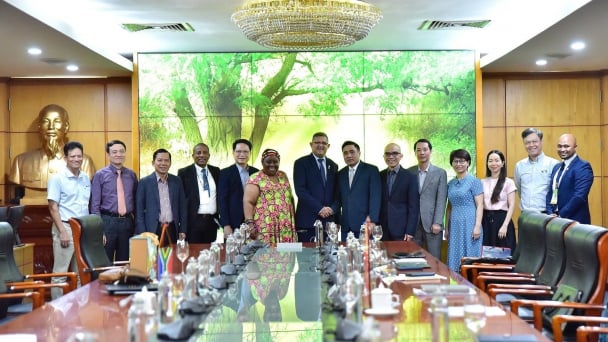
(VAN) South Africa commits to working with Vietnam to conserve biodiversity, promote a just energy transition, manage marine areas, and develop sustainable aquaculture.

(VAN) Vietnam Agency of Sea and Islands has proposed that the MAE organize the Vietnam Sustainable Maritime Economy Development Forum in 2025.
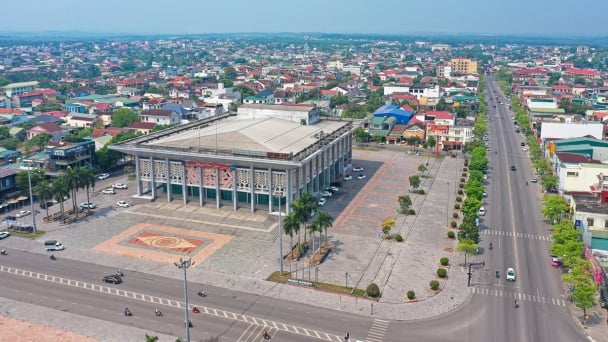
(VAN) Deputy Prime Minister Nguyen Hoa Binh has just signed a decision approving the Project to organize administrative units at all levels and build a two-tier local government structure.

(VAN) This is an important goal that the UN-Habitat organization of the United Nations is implementing in Son La, aiming to respond to climate change and reduce disaster risks.
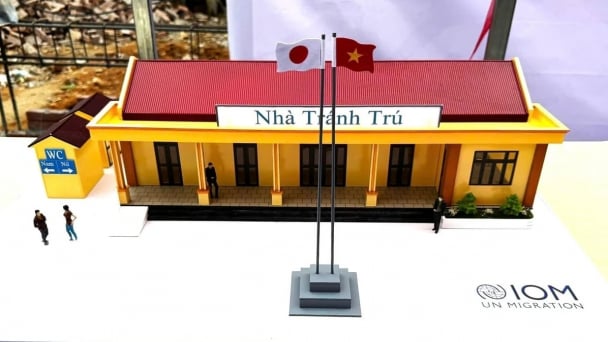
(VAN) In the context of increasingly complex climate change, the International Organization for Migration (IOM) is committed to supporting Vietnam in developing safe and sustainable migration models.
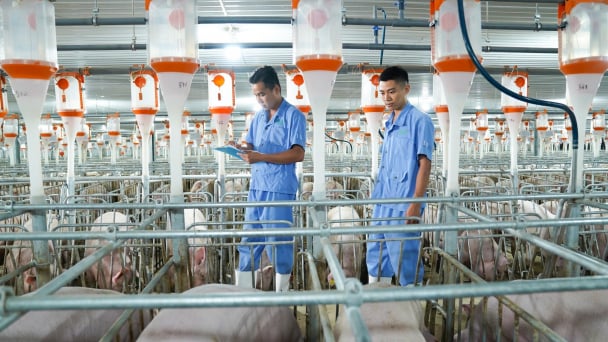
(VAN) In the second quarter, the whole sector plans to accelerate production and penetrate new, high-potential markets, including the Middle East, Africa, and Halal Islamic Countries.

(VAN) On April 14, Prime Minister Pham Minh Chinh met with General Secretary and President of China Xi Jinping, who is on a two-day state visit to Vietnam from April 14 to 15.